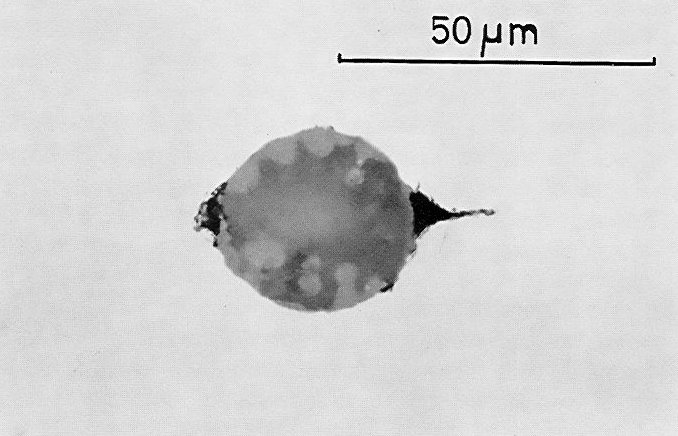
Alphabetical Index
Chemical Composition
Keyword Search
Named Inclusions
Steel Index
Exogenous Inclusions
Indigenous Inclusions
Macro Inclusions
Micro Inclusions
Nano Inclusions
Iron Oxide Inclusions
Nitride Inclusions
Oxide Inclusions
Phosphide Inclusions
Silicate Inclusions
Spinel Inclusions
Sulfide Inclusions
Refractory Inclusions
Slag Inclusions
Figure Browser
Help
Contact Us
Home
Highly deformable MnS inclusion and non-deformable calcium aliminate inclusion
Figure 1: Highly deformable inclusion (v=1) in rolled steel. Crack fromation at the metal/inclusion interface. Scale bar: 50 µm.
Figure 2: Non-deformable inclusion (v=0) in rolled steel with conical gap in steel phase. Scale bar: 50 µm.
Inclusion name: MnS, calcium aluminate
Record No.: 77
Inclusion formula: MnS
Inclusion type (Macro/Micro/Nano): Macro
Inclusion type (Exogenous/Indigenous): Indigenous
Inclusion classification: Sulfide
Inclusion composition in weight %: No data
Sample: Laboratory 6 kg ingot of electrolytic iron, molten in a high frequency induction furnace in magnesia crucibles and deoxidized with manganese, silicon manganese and silicon.
Steel composition in weight %: (First) 0.006-0.010% C, 0.004-0.006% Si, 0.003-0.005% S, nil P, 0<Mn<1.25. (Second) 0.02-0.007% C, nil Mn, 0.001-0.006% P, 0.002-0.006% S, 0.002-1.175% Si.
Note: v - is index of deformability. Fig. 1: The eliptically deformed inclusion in the steel in MnS with a small nucleus of calcium aluminate. No discontinuities occur between the inclusion and the steel phase. Fig. 2: The spherical inclusion is a calcium aluminate, which was not deformed at the rolling temperature of the steel. The rolling direction is indicated by the cavity. White areas in the inclusion are MnS precipitates at the inclusion surface.
Reference: Not shown in this demo version.